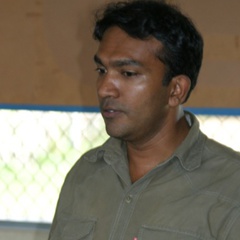Stop The Jabiluka Uranium Mine in Kakadu
Does the art of campaigning involve commodifying a struggle and presenting it in a package to the people through the media? What impact does the media really have? How useful is the net as an alternative medium? Does it only reach the alternative people - those who already know about the issues or is it capable of engaging with the mainstream public. Does genuine public opinion have any real impact in the current political and corporate climate?
The Stop Jabiluka campaign aimed to stop the development of a uranium mine on land that was both Aboriginal owned and World Heritage listed for cultural and environmental values.
The media was an important player in the whole campaign. Actions were designed to maximize media interest and impact. Press releases were organized and journalists were informed. The usual stuff to get the story on the news was carried out. But without committed people networks - successful actions would never have occurred. The aim of the campaign was clear but the methodology and direction was at times confusing.
The image of the campaign became a central issue. It was considered important that the campaign connects with the mainstream population. Many people in the campaign were activists who had rejected the structures of society and the directive to adopt, engage and obey the needs of the mainstream were problematic and divisive.
Getting the right message to the mainstream media outlets is important but those strategies shouldn't disillusion the activists working on the campaign. Sometimes we can become too 'media-correct' - going too far to ensure that the media gives us exposure. We can forget that ultimately it is people who instigate change - and that peoples loyalty to a campaign (like loyalty to a product J ) needs to be cared for and looked after.
Sensible media tactics are needed but they should be developed in relationship to the desired outcomes of the campaign. The internet and new media technologies need to be better understood before they can be used effectively. The fragile activist community is only beginning to use the net. This use needs to be fostered further before there is widespread understanding and agreement that the net is a important component of a campaign.
New media has already been highly effective in many campaigns and it offers new opportunities for critical intervention and provides a new site for protest. But new media is only part of the method and sometimes the method of the campaign becomes the focus or even the obsession and the aim of the campaign is be forgotten. The art of the campaign should always be in the background - it is the way to a successful campaign.
The Jabiluka campaign continues...

